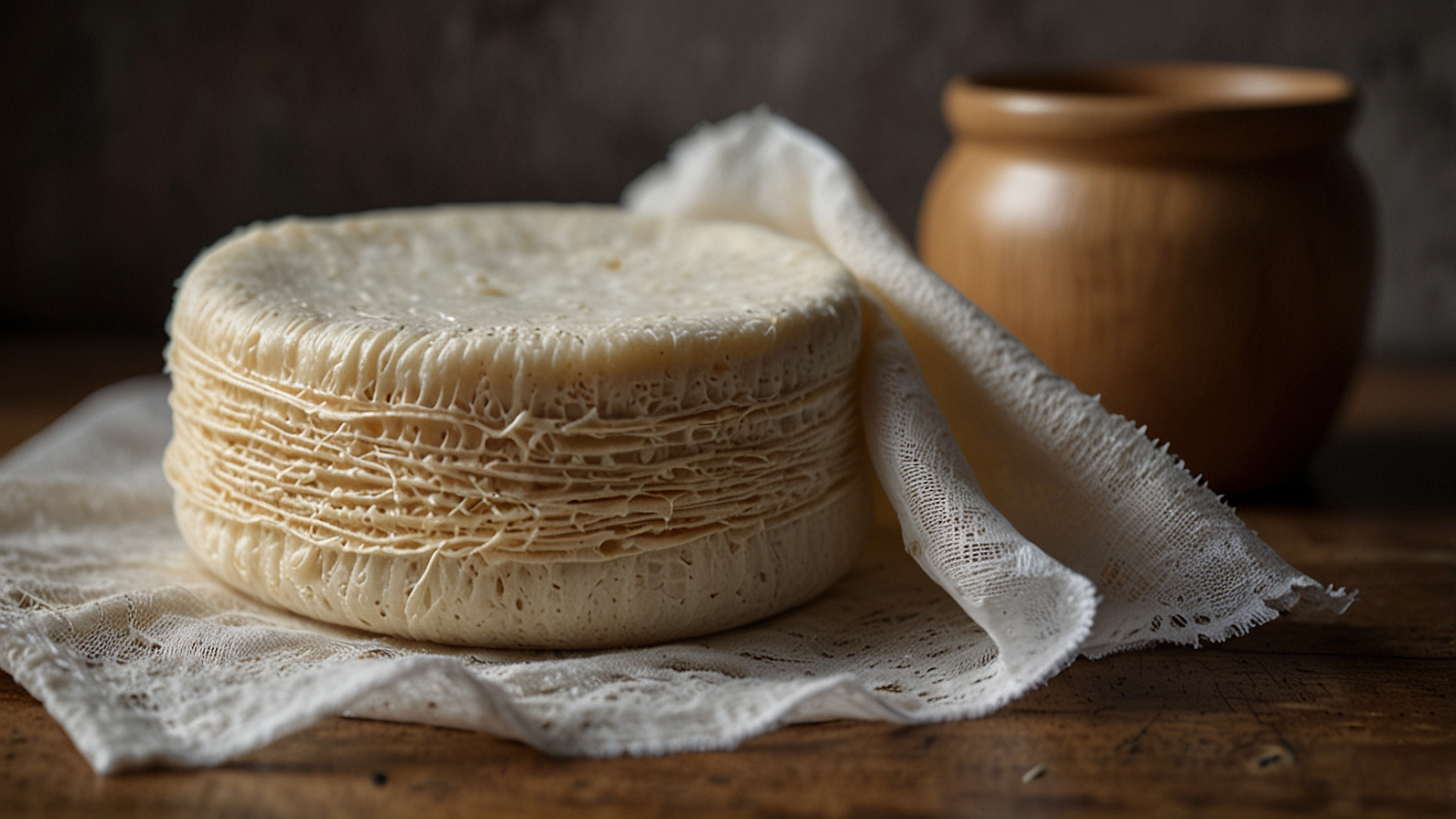Introduction
Cheese cloth is an essential kitchen staple from lightweight, loosely woven cotton fabric. Primarily used in the cheese-making process to separate curds from whey, cheesecloth has gained popularity for its versatility in various culinary tasks. This fabric allows for easy straining of liquids, making it ideal for stocks, sauces, and infusions while also serving as a handy tool for creating herb bundles. Beyond the kitchen, cheese cloth finds applications in crafts and household cleaning, showcasing its multifaceted uses in everyday life. Its unique properties make cheese cloth a valuable asset for home cooks and professional chefs.
What is cheesecloth?
Cheese cloth is a versatile fabric made from loosely woven cotton that serves many purposes in the kitchen and beyond. It is most commonly recognized for its role in cheese making, where it helps separate curds from whey. This lightweight material allows liquid to flow through while retaining solid particles, making it ideal for culinary applications. Cheesecloth comes in different grades, indicating the tightness of the weave, which affects its filtering ability. This adaptability makes cheese cloth a staple in many kitchens.
Culinary Uses of Cheese Cloth
In cooking, cheesecloth is an invaluable tool for various tasks. It is perfect for straining stocks, soups, and sauces, ensuring a smooth texture without unwanted solids. Cheesecloth melts flavors when making herb-infused oils or broths without leaving bits of herbs behind. Additionally, it can be used to wrap delicate foods, providing a gentle cooking environment. The ease of use and effectiveness of cheesecloth enhance many culinary creations.
Cheese Cloth in Cheese Making
The primary function of cheese cloth is in the cheese-making process. It is crucial in draining excess whey from curds, allowing them to form a solid cheese. Different grades of cheese cloth can be chosen depending on the type of cheese being made, with tighter weaves suitable for softer cheeses and looser weaves for harder varieties. The fabric’s breathable nature ensures that the cheese can develop its desired texture and flavour during ageing. Therefore, Cheese cloth is a fundamental item for novice and experienced cheesemakers.
Straining and Filtering with Cheese Cloth
Another significant use of cheese cloth is for straining and filtering various liquids. The cloth can capture solids when preparing homemade stocks, leaving behind a clear and flavorful broth. This function extends to juices and purees, where cheese cloth ensures a smooth consistency. Home cooks can achieve professional-quality results in their dishes by using cheesecloth. Its fine weave makes it an effective tool for any kitchen.
Crafting with cheesecloth
Beyond culinary applications, cheesecloth also shines in the world of crafts. It can be used for various projects, such as creating decorations or art pieces. The fabric’s lightweight and pliable nature makes it easy to manipulate and shape. Cheesecloth can be dyed or painted to match different themes, adding a unique touch to craft projects. This versatility allows for creative expression and innovation in various artistic endeavours.
Cheese Cloth for Cleaning
Cheesecloth is not just for food-related tasks; it is also handy for cleaning purposes. Its soft texture makes it suitable for dusting and polishing surfaces without scratching them. Additionally, cheesecloth can be used to clean windows, leaving them streak-free and shiny. The absorbent qualities of cheesecloth help in soaking up spills effectively. This practical use adds to the many reasons to keep cheesecloth in the household.
Using Cheese Cloth for Food Storage
Cheesecloth can also be utilised for food storage, particularly for wrapping delicate items. It allows for ventilation while protecting food from contaminants. This is particularly useful for cheese and vegetables, helping maintain freshness. The breathable nature of cheesecloth prevents moisture buildup, reducing the risk of spoilage. Thus, cheesecloth proves beneficial in extending the shelf life of various foods.
DIY Herb Sachets with Cheese Cloth
Another innovative use for cheesecloth is creating herb sachets. Placing dried herbs inside and tying them securely allows you to infuse flavours into soups, stews, and sauces without leaving residue behind. These sachets can be easily removed after cooking, ensuring a clean presentation. Cheesecloth sachets are a simple yet effective way to enhance the taste of your dishes. Using this strategy makes cooking a mess-free pleasure.
The Importance of Cheese Cloth Grades
Cheesecloth comes in several grades, each suited for different tasks. The grades indicate the fabric’s weave density, which affects its filtering capabilities. For example, grade 10 is the loosest and is ideal for draining, while grade 90 is much tighter and suitable for straining fine liquids. Understanding these grades is essential for choosing the right cheese cloth for culinary or crafting needs. This knowledge ensures optimal results in every application.
Conclusion
Cheesecloth is an essential item that offers a multitude of uses beyond its traditional cheese-making role. Its lightweight, versatile nature makes it suitable for straining, filtering, crafting, and cleaning. Whether you’re a home cook looking to enhance your dishes or a craft enthusiast exploring new projects, cheesecloth is valuable to your toolkit. The numerous applications of cheesecloth highlight its importance in everyday life. Keeping some cheesecloth on hand can greatly enhance culinary and creative pursuits.
